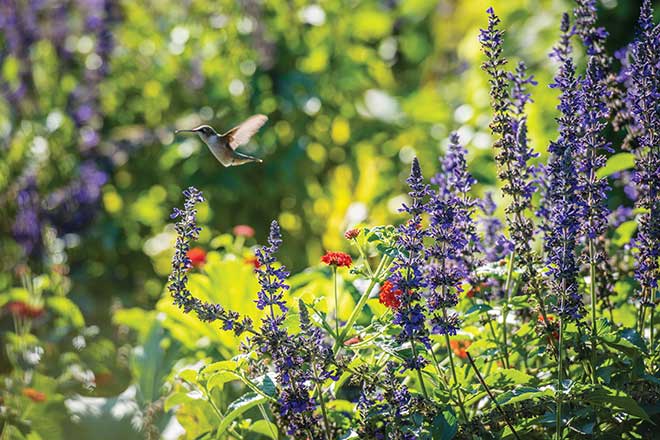When establishing Moss Mountain Farm, preserving the native landscape was at the forefront of my mind. I always recall a quote from English poet Alexander Pope when I begin to build or design: We should first “consult the genius of the place.” To me, that means understanding the land and working with its inherent properties.
This also can mean considering native plants and other species when choosing items for the garden. I try to plant a diverse range of vegetables, flowers and fruits to attract beneficial insects and pollinators, but I’m also making a concentrated effort to cultivate the native wildflowers and species into the landscape. These are the flowers pollinators feel most at home with, so it makes sense to include them!
However, it’s tricky work. Wildflowers are more difficult than you might think. We live under the illusion that you can take a packet of wildflower seeds, throw them on the ground, and suddenly they emerge and bloom at your feet. That’s hardly the case. There is a lot more involved in getting those plants established and integrating them into the ecology. For example, the pasture at Moss Mountain farm was used for cattle grazing for many years, so it’s a challenge to re-establish native wildflowers. But I still try!
In my home state of Arkansas, I’ll often find wildflowers on the road nearby and gather seeds before they mow. I did that this year with baptisias and echinacea pallida, one of our native coneflowers. I planted them along my driveway to get them started. I also harvested seeds from the native coreopsis and rudbeckias and sowed them in different places around the farm. Usually I leave with a good case of chiggers, but it’s worth it.
When gathering seeds, a good rule of thumb is to use around 40 or more seeds per square foot, depending on your landscape. Not all will germinate, and this is a good place to start. You must also consider the land, however. If there’s run-off in the area or if it’s on a slope, you may need more. Here are a few ideas to get started with ‘wildscaping’ or incorporating more native flowers into your St. Louis area homesteads to offer shelter and food for pollinators and other wildlife.
Hummingbirds will flock to tubular-shaped flowers such as honeysuckle and Cardinal flower. Songbirds will feed on mulberry, hackberry, black cherry trees, and beauty berry, which can be found in the most surprising places at the farm.
Lemon Mint, or Purple Horse Mint, is a native annual wildflower that grows to be 2 or 3 feet tall and is attractive to many butterflies and bees. It’s drought-tolerant but does need re-seeding each year. It’s a wonderful ‘nurse crop’ that, once established, can make way for other plants in the coming year.
Bee balm is as Southern as chocolate gravy, in my opinion, and it’s a magnet for butterflies and hummingbirds. However, it’s not appealing to deer or rabbits, in most cases.
Northern sea oats is an ornamental grass that will tolerate part-shade, and the oat-like heads provide winter interest.
Asters are another tough perennial that soak up any attention you bestow on them and reciprocate with pretty little blue and lavender flowers in summer and fall.
Woodland phlox is a delicate wildflower that’s more fragrant than you might expect. It’s hardy and disease-resistant, and I think clusters of this beautiful gem are so romantic!
Hopefully, that will get you started. And while you’re traveling the back roads and highways of your lovely state, keep an eye out for the plants and flowers that seem to thrive and consider taking a few home with you!
P. Allen Smith is an author, conservationist, and TV host of Garden Home on PBS and Garden Style (check your local listings). He uses his Arkansas Home, Moss Mountain Farm, to promote the local food movement, organic gardening and the preservation of heritage poultry. For tours of the farm, visit pallensmith.com/tours.
Photos: Mark Fonville and Jane Colclasure
